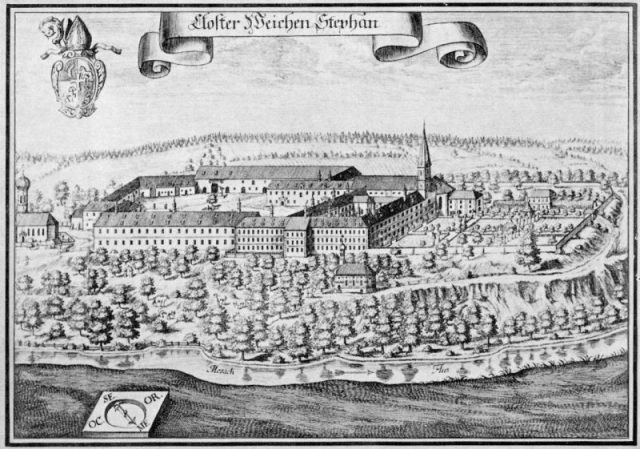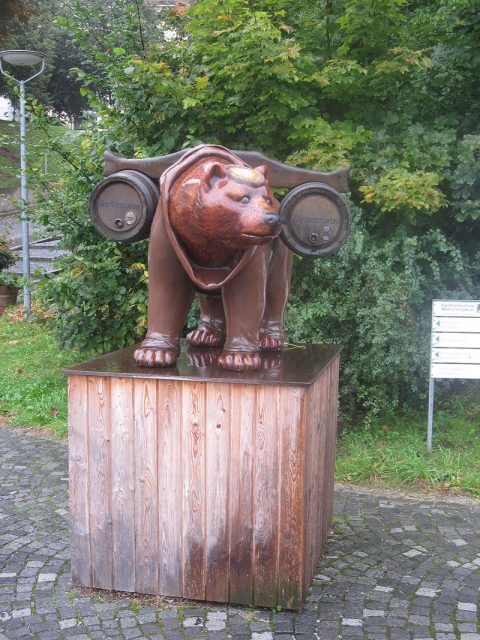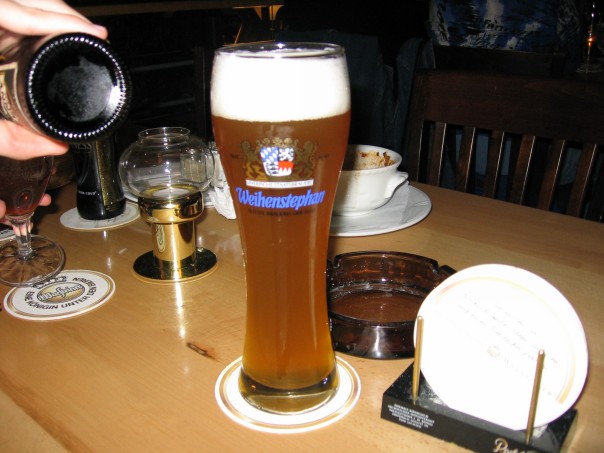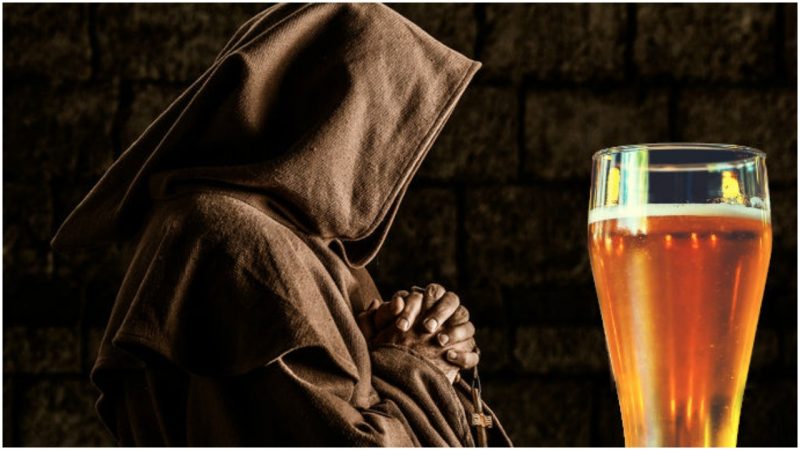If you want to talk the history of beer over a pint, what better place than the world’s oldest continuously operating brewery? Forty miles due north of Munich, braumeisters at the Weihenstephan Abbey have been boiling hops for nearly 1,000 years.
And the seeds of beer history were planted even earlier. In the year 725, Saint Korbinian, along with 12 traveling companions, founded a Benedictine monastery on Nährberg Hill in Weihenstephan, in an area now called Freising. By the year 768, a hops garden was established on the grounds. Records show that farmers were obligated to pay a 10 percent tithe to the monastery for the privilege of growing hops on the land.
In the year 955, the Weihenstephan monastery was destroyed for the first but not the last time when Hungarians plundered the site, forcing the monks to reconstruct.
In 1040, brewing officially began when Abbott Arnold obtained a license from the city of Freising to brew and sell beer.

In its first 400 years, the Weihenstephan Monastery burned completely down four times, endured three plagues, and suffered the effects of one massively destructive earthquake. During that time, the monastery was destroyed and plundered time and again, by the Swedes, the French, and the Austrians. But still, the undaunted monks returned to rebuild—and to brew and sell beer.
In 1516, Duke Wilhelm IV of Bavaria issued the Bavarian Purity Law, or, in German, Reinheitsgebot. This mandated that only barley, hops, and water be used in the crafting of beer (yeast was later added to the list), thereby establishing the primacy of Bavarian and Weihenstephan beer. The law also set the price of beer, limited the profits innkeepers could collect, and made confiscation the penalty of impure brewing practices.
(Interestingly, Reinheitsgebot is still German law. Modern brewers have lobbied to modify the restrictions so that they can compete with flavored American craft beers. A revised version of the law passed in 1993 allows for a wider variety of malted grains in top-fermented beers.)
In 1803, the Wesihenstephan Monastery was secularized. With the stroke of a governmental pen, all of the land and structures became property of the Bavarian State. Nevertheless, the brewery persisted.
In the late 1800s, an agricultural school was established at Weihenstephan, and by 1919 it had been elevated to the University for Agriculture and Brewery, which was further affiliated with the Technical University in Munich in 1930. Today Weihenstephan shares its site with the University of Munich’s Faculty of Brewing, the most renowned in the industry. The most popular academic disciplines are brew master and brew engineer.

Today you can take a tour of the nearly 1,000-year history of the brewery, guided by an aspiring beer master from the university. Though the building has been reconstructed many times, the physical footprint and layout haven’t changed much over the past hundreds of years. There are still vaulted ceilings and dark basements, where vast stainless steel vats have replaced the old oak barrels. Tours end with beer-tasting in a souvenir wheat-beer glass. Weihenstephan produces around 6 million gallons of beer a year. Its wheat beer makes up about 88 percent of the brewery’s total output, though 12 different types of beer are on offer, including a dark beer, a pilsner, a seasonal lager, and an alcohol-free version.

The Bavarian region is famously rife with breweries, some of which have challenged Weihenstephan’s claim to be the oldest. The nearby Hofbrauhaus in Freising has been in operation since the 1100s. Some 90 kilometers north, Weltenburg Abbey brewery is by some reckonings the oldest monastic brewery in the world, having been in operation since 1050.
Obviously, the only thing to do is to take a tour of all the breweries and decide for yourself not just which one is oldest but which is best. Perhaps in the year 2040, when Weihenstephan turns 1,000. Prost!
E.L. Hamilton has written about pop culture for a variety of magazines and newspapers, including Rolling Stone, Seventeen, Cosmopolitan, the New York Post and the New York Daily News. She lives in central New Jersey, just west of New York City
